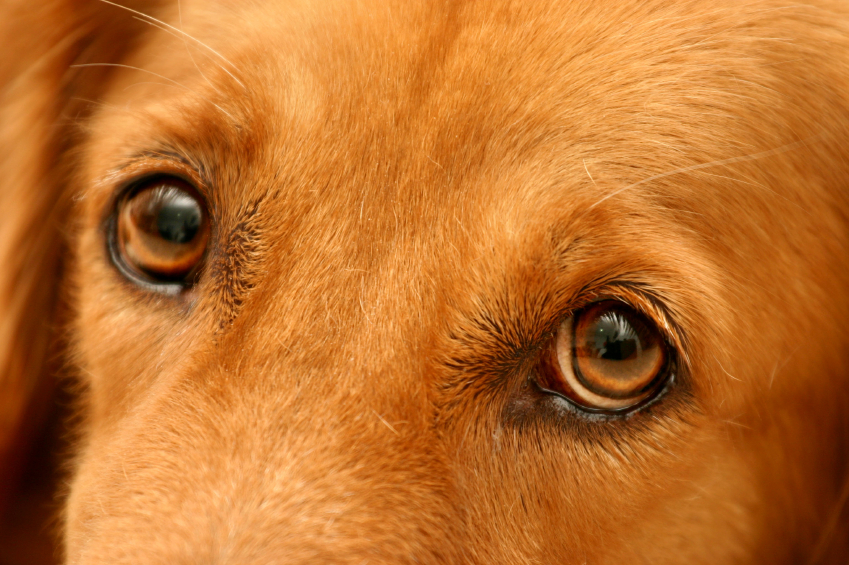Pet Eye Problems: Corneal Ulcers
 One minute your pet is fine, and the next she is squinting her eye, tearing and reluctant to open the eye. You call the vet and they tell you to come in right away. What could be happening with your pet’s eye health?
One minute your pet is fine, and the next she is squinting her eye, tearing and reluctant to open the eye. You call the vet and they tell you to come in right away. What could be happening with your pet’s eye health?
One of the most common causes of these symptoms is a corneal ulcer. The cornea is the clear tissue at the front of the eye. Although similar to skin, having an outer epithelial layer, middle stromal layer and inner endothelial layer, the cornea is very thin being approximately 0.5 mm.
If the outer layers of this tissue are damaged then a corneal ulcer or “an open sore” of the tissue develops. There can be many underlying causes including trauma, eyelash problems etc., however many times the underlying cause cannot be determined.
Diagnosis
Your veterinarian can confirm the diagnosis of a corneal ulcer by examining the eye and using a special fluorescent dye applied to the eye to confirm the presence of the ulcer. Normally, a healthy corneal surface free of damage will not retain any of the dye, but any defect will expose the deeper layers of the cornea and allow the dye to be “absorbed”.
Treatment
Fortunately uncomplicated corneal ulcers heal very well. It is important to treat the damaged cornea to prevent or resolve any infection present. Topical antibiotics (eye drops) will be prescribed, and it’s possible that your pet may benefit from pain relief, as well.
It is recommended to wear an Elizabethan collar (cone of shame) to prevent your pet from rubbing their eye during the healing process and cause further damage. Your veterinarian will want to recheck the eye regularly to ensure it is healing. It is important not to skip these follow-up appointments.
Complications
Occasionally, a corneal ulcer does not heal as expected or has complicating factors. These cases may require more specialized care or surgical intervention. For example:
Indolent or non-healing ulcers – The outer layer of the cornea (epithelium) is not able to adhere to the underlying layer (stroma). Advanced techniques are utilized to remove the non-adhered tissue and promote healing i.e. corneal debridement, diamond burr keratectomy
Descemetoceles – When an ulcer is so deep that it almost perforates through all the layers of the cornea, a descemetocele may form. Surgical intervention is needed in these cases.
To the untrained eye, many ocular health problems may look similar, so it is critical to have a veterinarian examine the eye to determine if there is a problem and what treatment is needed. Even though some problems are relatively mild, eye problems in pets can progress rapidly and become very serious. Because of this it is important to have any abnormality involving the eye checked by your veterinarian immediately.


